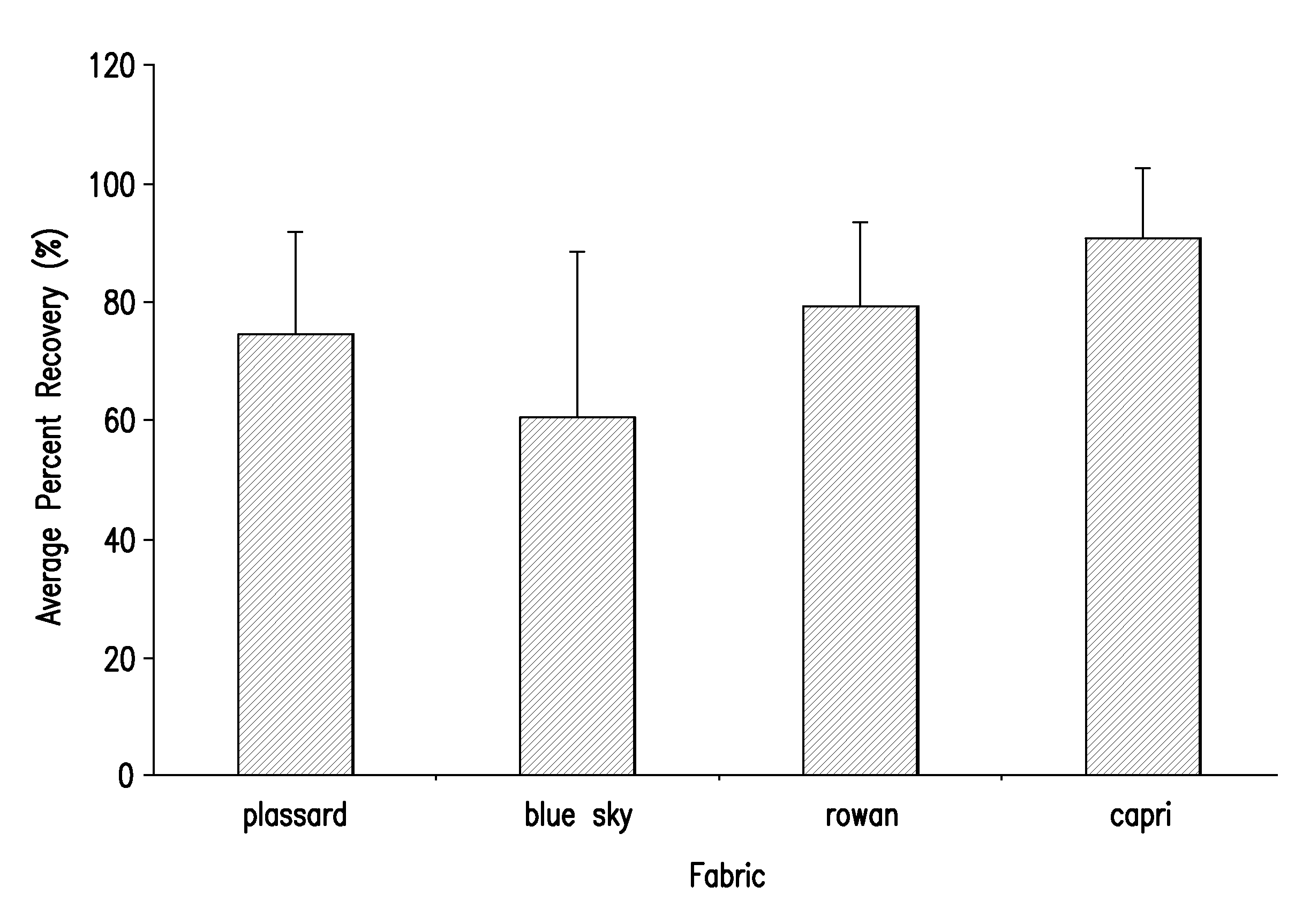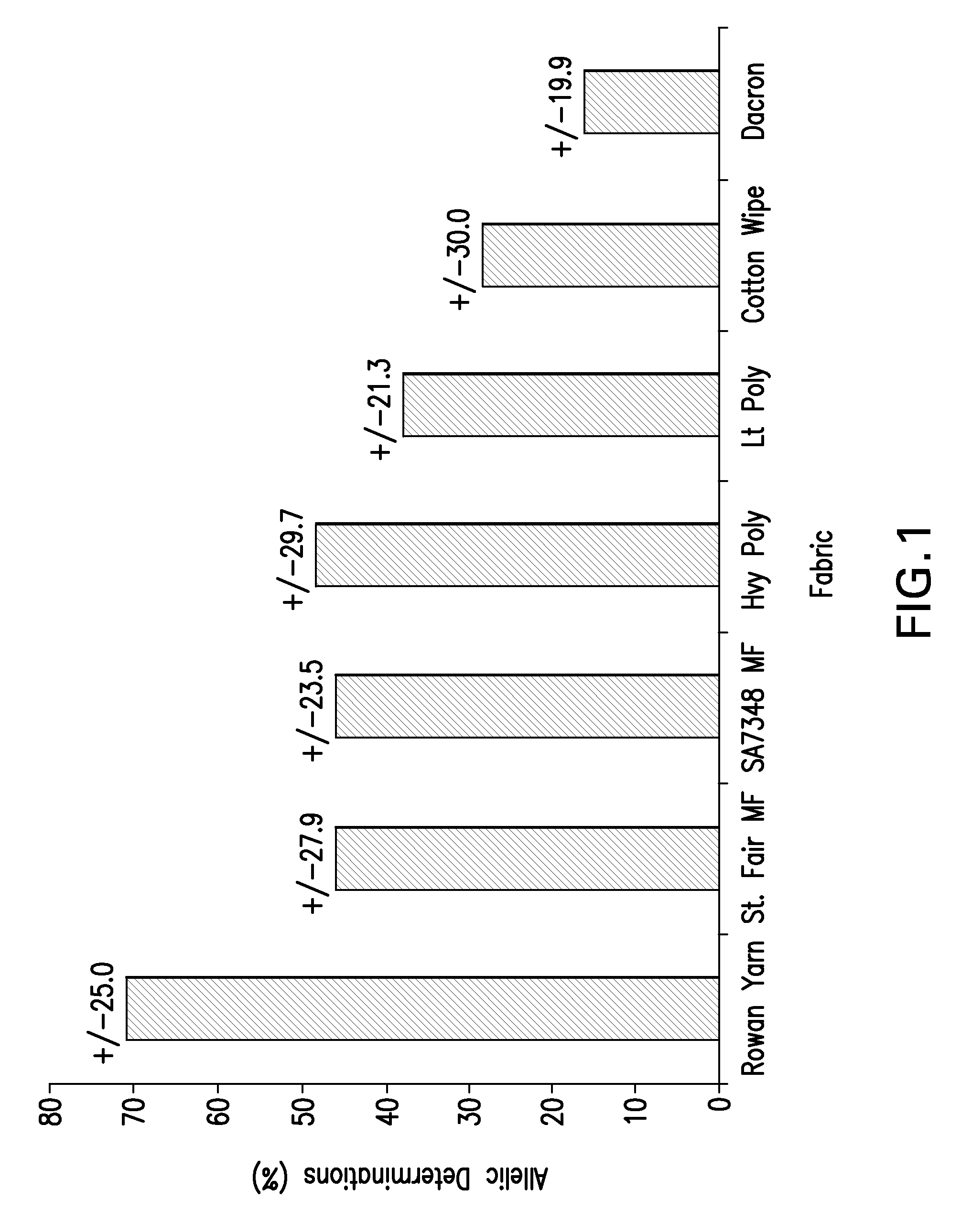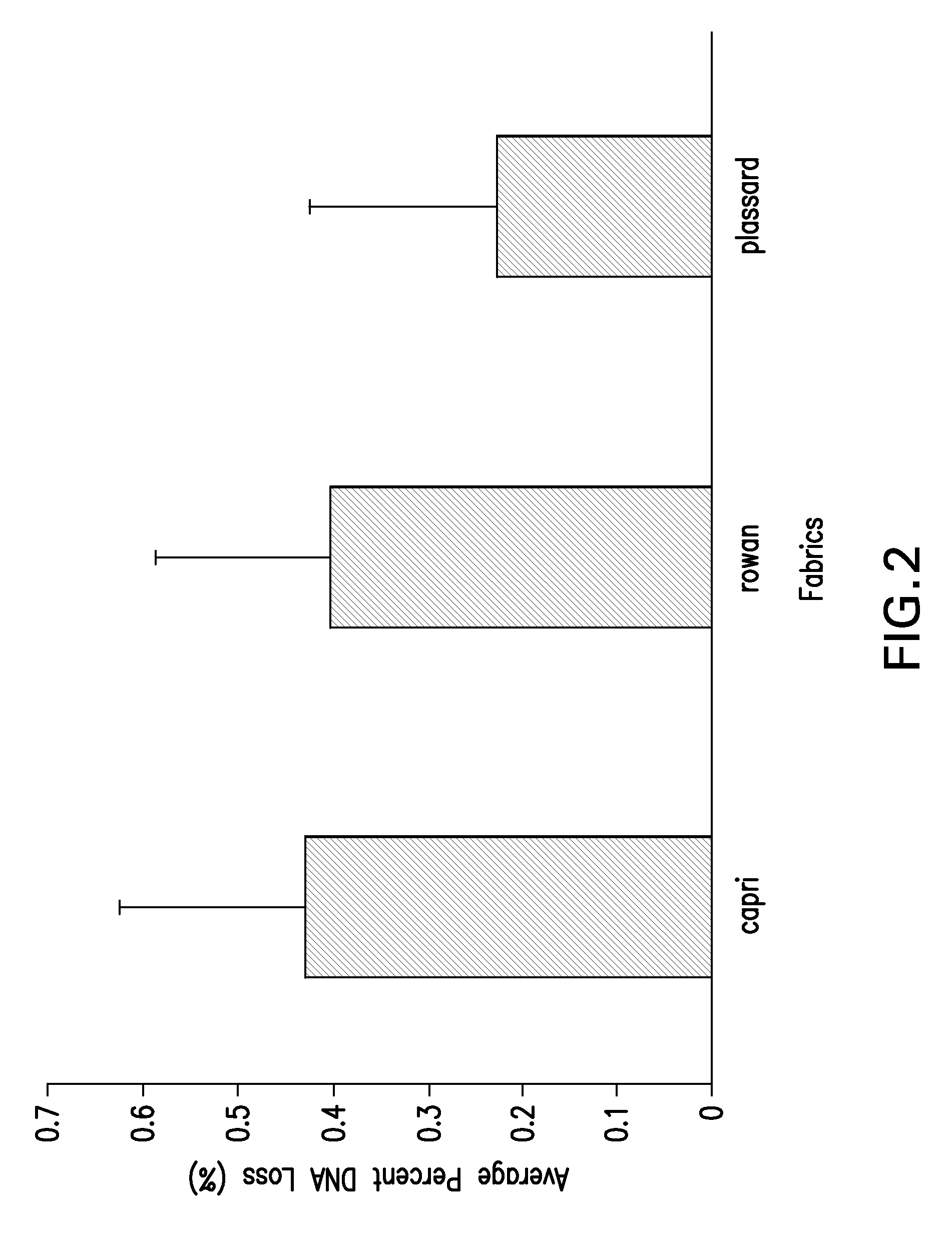Forensic swab and kit
a forensic and kit technology, applied in the field of high-sensitivity crime scene swab devices, can solve the problems of inefficiency in recovery and release of dna, inability to determine the age of a set of fingerprints, etc., to achieve the maximum recovery of trace amounts, low copy number of dna, and efficient release of dna
- Summary
- Abstract
- Description
- Claims
- Application Information
AI Technical Summary
Benefits of technology
Problems solved by technology
Method used
Image
Examples
example 1
Comparison of Swab Materials for Generation of DNA Profiles from Fingerprints
[0092]Fingerprints of donors (ten fingers) were deposited on chrome doorknob. The prints were swabbed with approximately 1 cm length of a Dacron® swab or pieces of Rowan™ yarn, cotton wipe, microfiber (streetfair), microFiber (sa-73481e), heavy polyester (sa6254), and light polyester (sa6209) moistened with 0.01% SDS.
[0093]Samples materials were incubated in 200 μl of 0.01% SDS and 0.18 mg / ml Proteinase K for two hours at 56° C. with shaking at 1400 rpm, followed by 10 mins. at 99° C. Two hundred μl of water and the 200 μl of sample were added to a Microcon®-100 and centrifuged for 15 mins. at 2400 rpm. DNA was eluted with 50 μl of water for 3 mins. at 3500 rpm.
[0094]A 10 μl sample was amplified with PowerPlex® 16 (Promega) according to the manufacturer's instructions, except that 35 cycles were employed. Two μl of the amplification reaction products were injected on an ABI Prism 3100 for 20 sec at 3 kV.
[00...
example 2
Comparison of Swab Materials
DNA Sample Absorption
[0097]Absorption of DNA in a DNA solution was determined. A 4 ng DNA sample in 10 μl of water was placed in a microfuge tube. Cotton materials approximately 1 cm were placed in the tubes for 10 mins. at room temperature and then removed. Two hundred μl of water was added to the tubes to resuspend any remaining DNA. After incubation for 20 mins. at room temperature, the samples were concentrated to 25 μl with a Microcon®-100 microconcentrator. The amount of DNA in the samples was determined with ALU based real time PCR. Results are expressed as the amount of DNA measured divided by the starting amount of DNA.
[0098]Very little of the DNA in the microfuge tubes was not absorbed by the cotton swab materials. (FIG. 2) The amounts of DNA remaining were 0.22+ / −0.19% (Mayotte™ / plassard), 0.42+ / −0.19% (Capri™) and 0.4+ / −0.18% (Rowan™).
[0099]Comparison of Swab Materials—DNA Release from Swab
[0100]DNA lost to the various swab types was determine...
PUM
| Property | Measurement | Unit |
|---|---|---|
| weight | aaaaa | aaaaa |
| length | aaaaa | aaaaa |
| length | aaaaa | aaaaa |
Abstract
Description
Claims
Application Information
 Login to View More
Login to View More - R&D
- Intellectual Property
- Life Sciences
- Materials
- Tech Scout
- Unparalleled Data Quality
- Higher Quality Content
- 60% Fewer Hallucinations
Browse by: Latest US Patents, China's latest patents, Technical Efficacy Thesaurus, Application Domain, Technology Topic, Popular Technical Reports.
© 2025 PatSnap. All rights reserved.Legal|Privacy policy|Modern Slavery Act Transparency Statement|Sitemap|About US| Contact US: help@patsnap.com



